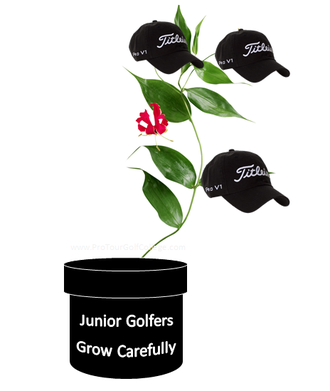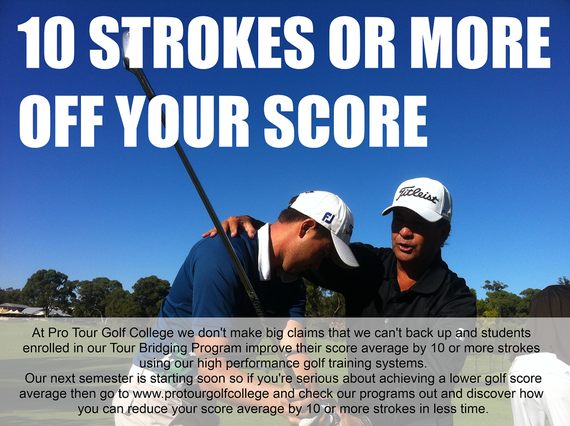 The question that is regularly asked of PTGC's co-director Lawrie Montague and myself by parents of junior golfers is how can their child emulate the success of young golfers like Rory McIlroy, Matteo Manessero, Ryo Ishikawa and Guan Tianliang? The answer is in understanding how junior golfers develop and Lawrie and I describe it as the "garden metaphor". What I mean is that garden plants develop and grow at their own pace and blossom at different times. Some will flower early and wilt early, whilst others will flower later and keep flowering the rest of their life; and some will never flower. There are some that grow quickly, and others take more time to reach maturity. Most plants need plenty of attention in their early years like watering and fertilizing to make them grow strong, and others can be left alone and will thrive. There are plants that require shade, and others that need the full sun. Some are solitary, whilst others need to grow in bunches. There are plants that are extremely hardy, and others are fragile and need nurturing. And in all of this, constant weeding is required to keep them from being overwhelmed. It is proven beyond doubt that all junior golfers (I mean flowers) grow and flourish best in their own natural environment. History has also shown that trying to make or change human beings into one model or one size fits all does not work. The same applies to developing a junior golfer on a long term player pathway. Each junior has to be guided and encouraged to be an individual in their development and be allowed to grow at their own pace to reach the full potential.  So the garden metaphor shows us that you can't and shouldn't rush junior golf development, and the reason below will be a guide as to why this is so. As in all junior sports physical size does matter in the early teenage years and most of the early developers tend to dominate junior golf as they are able to reach greens in regulation compared to the smaller - less developed juniors. The bigger and stronger juniors because of this advantage tend not to develop their green-side scrambling skills which in the long run will hold them back, and allow the other juniors to overtake them eventually. Those who are encouraged to improve all facets of their game keep dominating junior golf as they move through the age groups. The juniors who are exposed to and/or have access to good quality coaching, are the ones who also stay in the game longer as they tend to encounter less "road-blocks" along the pathway to being the best they can be. The coach will introduce training programs and systems designed for improvement that challenge the young golfer and guides him or her along a success pathway at their own pace. The junior who receives support from parents and golf associations should understand that not many juniors are going to be superstars, or winning professional events as teenagers. In fact the average age of professionals in the top twenty world golf rankings is 34.6 years. So there's no rush to get real good at golf; let the "garden metaphor" be the guide that allows your child (or the junior golfer you're working with) to reach their full potential. And it is important to understand that trying to shorten the development timelines is usually a recipe for failure; especially if the junior is your child. David Milne and Lawrie Montague - Pro Tour Golf College Your Success On Tour is Our Business Comments are closed.
|
Archives
June 2019
|
Proudly Supported By
Copyright © 2011 - 2018 Pro Tour Golf College
Website Managed By Golf Performance Media
All Rights Reserved
Website Managed By Golf Performance Media
All Rights Reserved


 RSS Feed
RSS Feed



